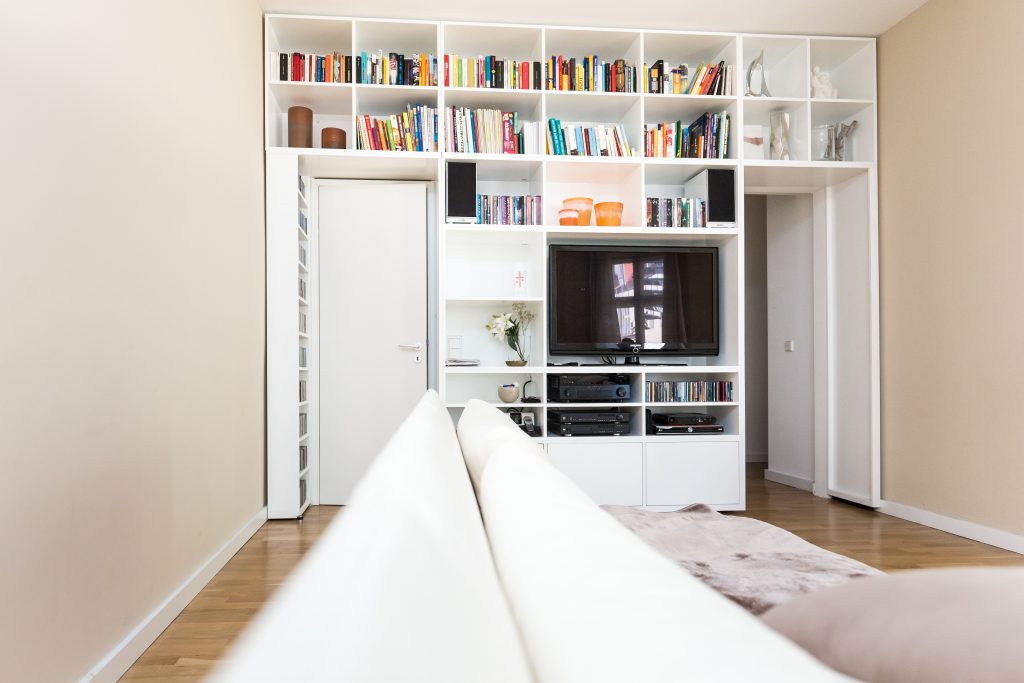The beauty and durability of natural wood components are not debatable. Regardless of the wood material used, whether maple or mahogany, there are endless options in regard to wood furniture.
On the other spectrum, we have MDF board furniture; a great alternative for solid wood components. MDF is manufactured from reprocessed fibre material that is compacted under extreme temperature with resin. MDF elements are less costly and more eco-friendly alternative for natural wood furniture.
Even though the durability of MDF furniture cannot be compared with that of solid wood, there is more that this engineered wood can offer.
What is MDF?
While you might have heard or even used MDF, you might not know exactly what this construction material is. It is a prevalent material for DIY and building projects, yet very misunderstood, especially when it comes to quality. So, what is MDF?
MDF are initials for Medium-density fibreboard. It is a prevalent material utilized in moulding, cabinetry and furniture making. It is an exceptionally flexible and inexpensive material, and this makes it an excellent option for various applications. It can be cut, shaped and painted to make it suitable for decorative projects.
MDF is obtained from fine wood chippings pressed together with a resin such as glue under extremely high pressure and temperature. The resulting product is a robust sheet material that is effortless to work with.
How to choose MDF?
To make an informed decision when choosing MDF, you need to be well conversant about its advantages and disadvantages. Take a look.
Advantages of MDF
- Cost – the main constituents of MDF are castoff materials such as wood chippings. This directly affects the cost of MDF, which is relatively lower than that of real wood.
- Size selection – there are varied MDF sizes, ranging from a thickness of 2mm to 60mm. With these diverse thicknesses, you can get the wood thickness for specific load-bearing applications.
- Smooth surface – during the MDF manufacturing, the materials are highly pressed together to obtain flush and smooth boards. This makes it suitable for painting or applying veneers.
- Consistent material – unlike solid wood, MDF boards luck directional grains, which gives it consistency. This property makes it ideal for cutting into intricate details without splinting.
- Minimal or no warping concerns – MDF is less affected by weather fluctuations. It uniformly expands and contracts without grain opposition.
However, there are some MDF cons you ought to be aware of, such as:
- Not so attractive material – the astounding beauty of real wood or plywood is incomparable with the appearance of MDF. MDF lacks most elements present in real wood.
- Constraints on the finish – unless you intend to paint your furniture, it is not advisable to opt for MDF. It soaks the liquid and doesn’t give the right colour effect.
- MDF absorbs moisture – since it is engineered from many fine fibres, MDF takes in water easily, making it swell and compromise its structural integrity.
- Not durable as solid wood – MDF board furniture durability is comparatively low to real wood furniture. The absence of directional grains means its strength is compromised. To make MDF furniture strong, their frames have to be made of un-engineered material such as wood.
- Contains VOC’s – the glue used in MDF contains formaldehyde. During sanding, the dust of this chemical is released, and prolonged exposure to it could lead to health issues such as throat and lung cancer.

